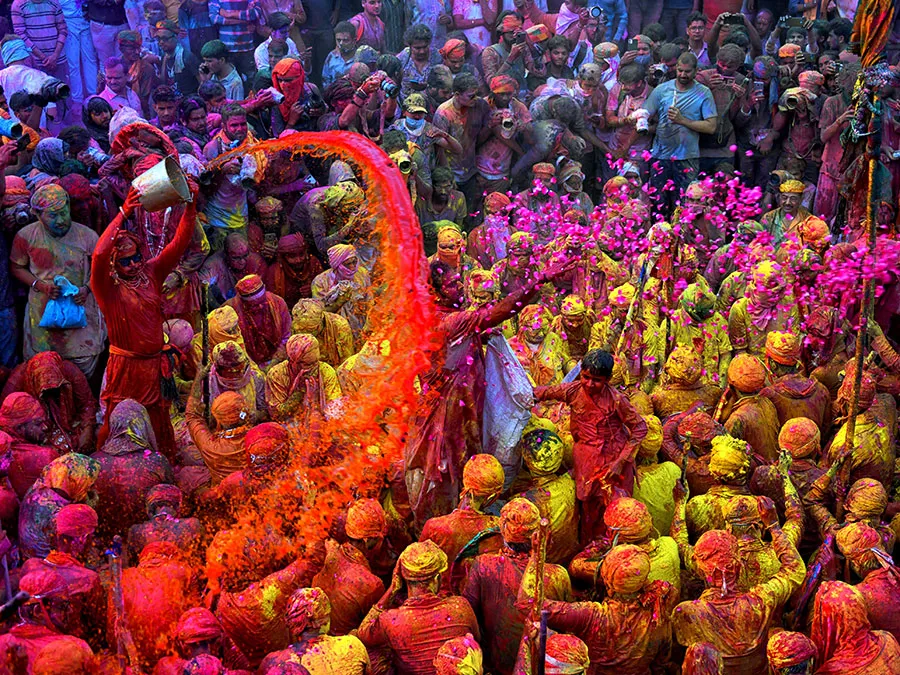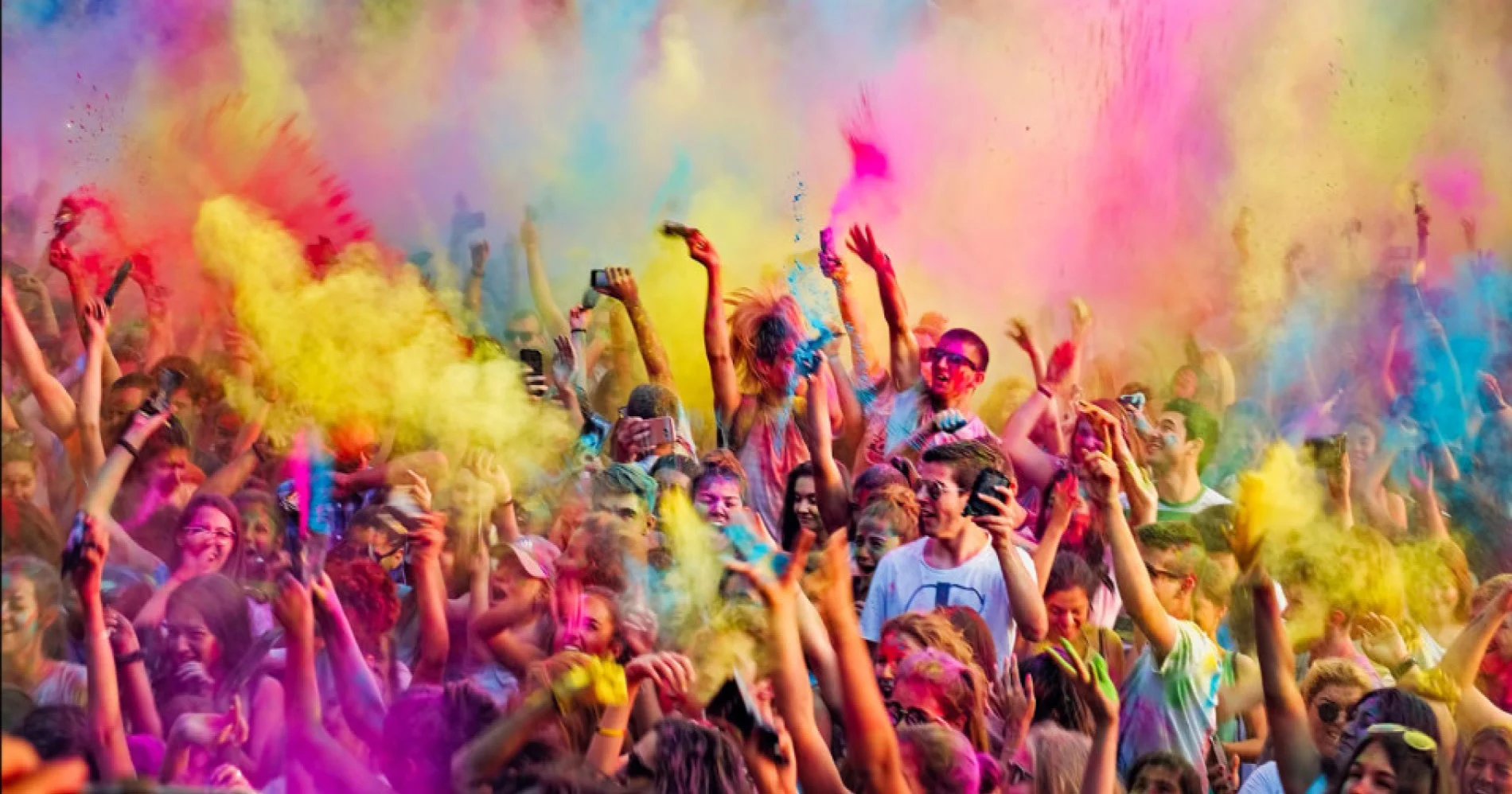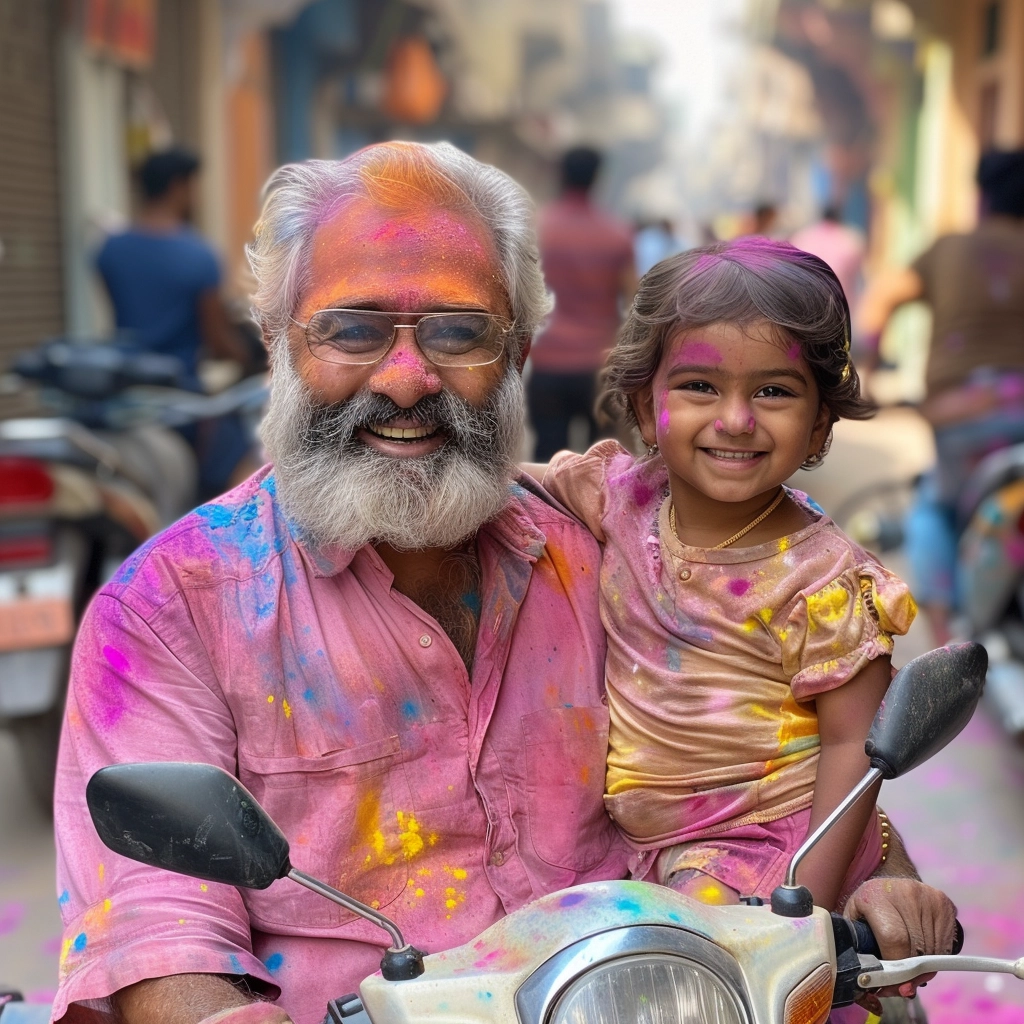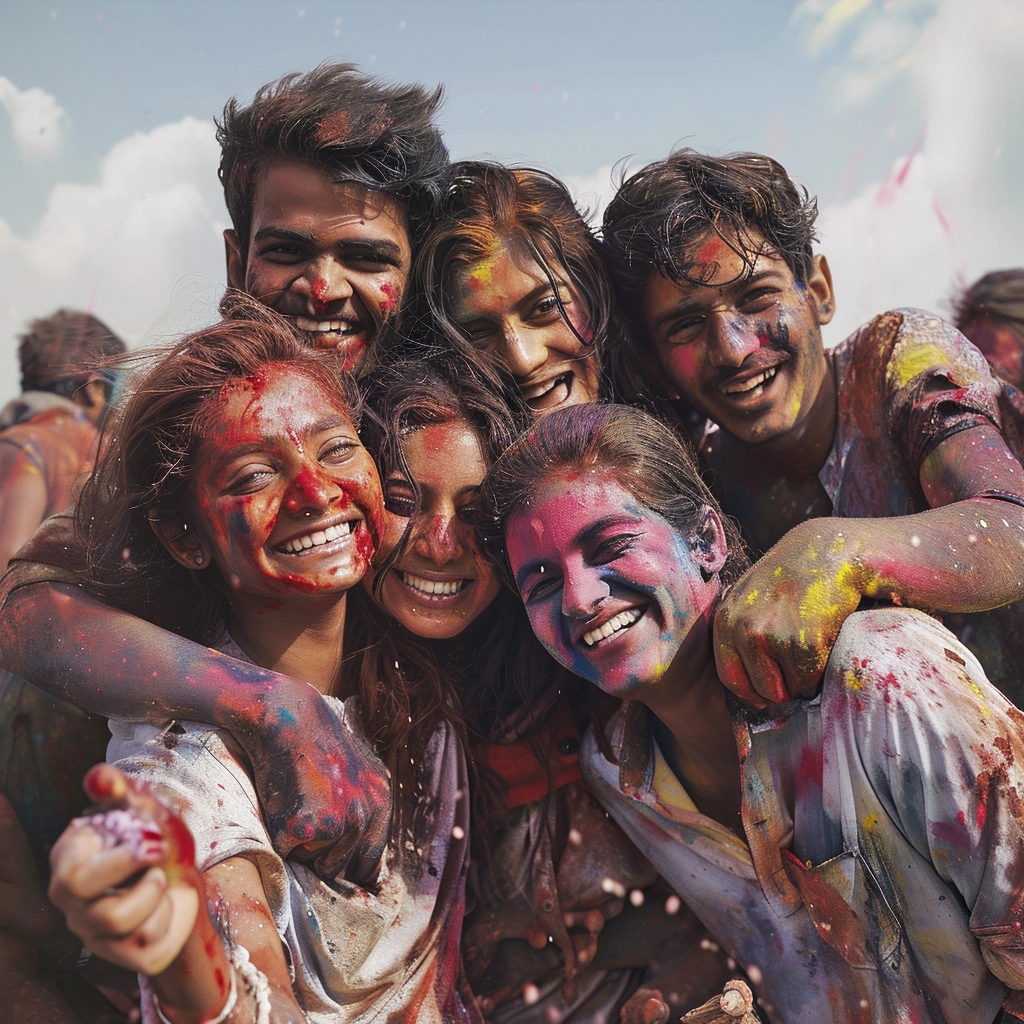Step into a world filled with vibrant hues, infectious joy, and an electrifying atmosphere – it’s time for Holi, the festival of colors. This exuberant celebration holds a special place in the hearts of millions, marking the arrival of spring and the triumph of good over evil. With roots tracing back centuries, Holi brings people from all walks of life together, united by their shared love for merriment and the desire to drench each other in a rainbow of colorful powders.
As laughter echoes through the air and water balloons explode in a burst of excitement, the significance of Zeusslot Holi extends beyond its seemingly playful surface. It symbolizes the obliteration of differences, encouraging forgiveness, friendship, and unity. Throughout this jubilant event, old grudges melt away, making room for forgiveness and new beginnings.
This ancient Indian festival captivates the senses, offering a sensory overload like no other. From the tantalizing aroma of mouthwatering sweets to the rhythmic beats of traditional music, Holi invites you to immerse yourself in a rich tapestry of sights, sounds, and tastes. So get ready to unleash your inner child, embrace the vibrant spirit of Holi, and embark on a journey that will leave you covered in hues of happiness.

Origins and significance of Holi
Holi is an ancient Hindu festival that dates back thousands of years. It is believed to have originated from various mythological stories, the most popular being the tale of Prahlada and Holika. Prahlada, a devotee of Lord Vishnu, was saved from the clutches of his evil aunt Holika by the divine intervention of Lord Vishnu. The bonfire lit during Holi symbolizes the victory of good over evil and the burning of Holika.
The festival also marks the arrival of spring, a season renowned for its vibrancy and fertility. Holi is a celebration of life, new beginnings, and the rejuvenation of nature. It is a time when people bid farewell to the cold winter months and welcome the warmth and abundance of spring. The festival’s colors represent the beautiful blossoms that adorn the landscape during this time, transforming the world into a kaleidoscope of joy.
Holi is not only celebrated in India but also in many other parts of the world where the Indian diaspora has settled. It has become a global symbol of unity and multiculturalism, where people from different backgrounds come together to celebrate and embrace diversity. This festival has become a bridge that connects people, transcending boundaries and fostering a sense of belonging and camaraderie.
Traditional rituals and customs of Holi
Holi is a festival steeped in tradition and customs that have been passed down through generations. The festivities typically begin with a Holika Dahan, a bonfire lit the night before Holi. People gather around the bonfire, singing and dancing to traditional songs, and offering prayers for the eradication of evil forces.
On the day of Holi, the real fun begins with the throwing of colors. People smear each other with brightly colored powders and spray water, turning the streets into a riot of colors. The playful nature of this ritual is contagious, with laughter and joy filling the air. It is a time when people let go of their inhibitions and embrace the childlike innocence within them.
In addition to playing with colors, Holi is also a time for indulging in delicious food and drinks. Traditional sweets like gujiya, a sweet dumpling filled with khoya and dry fruits, and malpua, a syrupy pancake, are prepared in every household. Thandai, a refreshing drink made with milk, nuts, and spices, is also a favorite during this festive season. It is often spiked with bhang, a traditional Indian cannabis-infused concoction, which adds to the merriment of the celebrations.
Playing with colors – the main attraction of Holi
The highlight of Holi is undoubtedly the playful and spirited throwing of colors. This vibrant tradition brings people together, breaking down barriers and fostering a sense of unity. As the colorful powders fill the air, inhibitions melt away, and people from all walks of life come together, celebrating the joy of life.
The throwing of colors is not just about drenching each other in hues of red, blue, and green. It is a symbolic act that represents the breaking down of social barriers and the celebration of equality. During Holi, people from different castes, classes, and genders come together on an equal footing, erasing the lines that often divide them.
The colors used during Holi also hold significance. Red symbolizes love and fertility, blue represents the divine and the infinite, while green is associated with new beginnings and prosperity. Each color carries its own meaning, adding depth and symbolism to the festivities.

Holi food and drinks – traditional delicacies
No festival in India is complete without indulging in mouthwatering delicacies, and Holi is no exception. Traditional sweets take center stage during this festive season, with families and communities coming together to prepare an array of delectable treats.
Gujiya, a sweet dumpling filled with khoya, dry fruits, and nuts, is a must-have during Holi. These crescent-shaped delights are deep-fried to a golden perfection and then dipped in sugar syrup. The combination of the flaky pastry and the rich, sweet filling is simply irresistible.
Another popular Holi sweet is malpua, a syrupy pancake made with flour, milk, and sugar. These golden brown delicacies are often flavored with cardamom and saffron, giving them a fragrant and aromatic touch. Malpua is best enjoyed warm, straight out of the frying pan, and pairs perfectly with a dollop of creamy rabri.
To wash down these sweet treats, a glass of thandai is a must. Thandai is a refreshing drink made with a blend of milk, nuts, and spices. It is often infused with bhang, a traditional Indian cannabis-infused concoction, which adds a unique twist to the festivities. Thandai is served chilled and is the perfect thirst quencher after a day of playing with colors.
Holi celebrations around the world
Holi has transcended borders and is now celebrated in many parts of the world. Indian communities around the globe come together to celebrate this joyous festival, keeping their traditions alive and sharing their culture with the world.
In the United States, cities like New York and Los Angeles host grand Holi festivals, attracting thousands of people from different backgrounds. These events feature live music, dance performances, and of course, the throwing of colors. The vibrant atmosphere and infectious energy make these celebrations a sight to behold.
In the United Kingdom, Holi is celebrated with great enthusiasm, particularly in areas with a large Indian population like London and Birmingham. Festivals and parades are organized, showcasing the rich cultural heritage of India. The streets come alive with music, dance, and, of course, the playful throwing of colors.
Holi celebrations can also be found in countries like Australia, Canada, and Singapore, where the Indian diaspora has made its mark. These events serve as a way for the community to come together, celebrate their shared heritage, and promote cultural exchange.
Safety precautions for a safe and enjoyable Holi
While festival of colours is a time of joy and celebration, it is important to ensure the safety and well-being of everyone involved. Here are some safety precautions to keep in mind:
- Protect your skin: Apply a generous amount of oil or moisturizer on your skin before playing with colors. This will create a barrier and make it easier to wash off the colors later. Avoid using harsh chemicals or soap to remove the colors, as this can cause skin irritation.
- Use natural and eco-friendly colors: Opt for natural colors made from flowers and herbs, as they are less likely to cause allergies and skin irritations. Avoid using colors that contain harmful chemicals or heavy metals, as they can have long-term health effects.
- Protect your eyes: Wear sunglasses or goggles to protect your eyes from color powders. If color accidentally gets into your eyes, rinse them with clean water immediately and seek medical attention if necessary.
- Stay hydrated: Holi celebrations can be physically demanding, so make sure to drink plenty of water and stay hydrated throughout the day.
- Respect personal boundaries: festival of colours is a playful festival, but it is important to respect other people’s boundaries. Always ask for consent before applying colors to someone’s face or body, and be mindful of people who may not want to participate in the festivities.
Eco-friendly alternatives to chemical-based colors
In recent years, there has been a growing concern about the environmental impact of chemical-based colors used during festival of colours. These colors contain harmful substances that can pollute the environment and pose a threat to human health. Fortunately, there are eco-friendly alternatives available that allow you to celebrate Holi while being mindful of the planet.
One option is to make your own natural colors at home using ingredients like turmeric, beetroot, and henna. These natural colorants are safe for the skin and can be easily washed off without causing any harm to the environment.
Another eco-friendly alternative is to use dry colors made from flowers and herbs. These colors are biodegradable and do not contain any harmful chemicals. They can be easily washed off and leave no residue behind.
By opting for eco-friendly colors, you can enjoy the festivities of colour while reducing your carbon footprint and contributing to a cleaner and greener planet.

Holi crafts and activities for kids
Holi is not only a festival for adults but also a time for children to have fun and participate in the celebrations. Here are some Holi-themed crafts and activities that kids can enjoy:
- Holi-inspired artwork: Encourage children to create their own festival of colours-inspired artwork using paints, colored pencils, or crayons. They can draw pictures of people playing with colors, vibrant landscapes, or abstract designs.
- DIY watercolor cards: Help children make their own watercolor cards to give to their friends and family. They can use watercolors to create colorful designs or paint their handprints to make unique and personalized cards.
- Holi storytelling: Gather children in a circle and tell them the story of Holi. Encourage them to ask questions and engage in discussions about the significance of the festival. This will help them understand the cultural importance of Holi.
- Holi-themed snacks: Get creative in the kitchen and prepare festival of colours-themed snacks with the kids. They can help decorate cookies or cupcakes with colorful icing or make fruit skewers with a variety of colorful fruits.
- Water balloon painting: Fill water balloons with different colors of water and let the kids use them as paintbrushes to create colorful artwork. They can throw the balloons onto a large sheet of paper or canvas, creating vibrant splashes of color.
These activities will not only keep children entertained but also help them learn about the cultural significance of festival of colours in a fun and interactive way.
Spreading joy and unity through Holi celebrations
Holi, the festival of colors, is a celebration of life, joy, and unity. It brings people together, transcending boundaries and fostering a sense of belonging and camaraderie. Holi is not just about playing with colors; it is about breaking down social barriers, embracing diversity, and spreading happiness.
As the vibrant powders fill the air and laughter echoes through the streets, festival of colours reminds us of the inherent goodness in humanity. It is a time to let go of grudges, forgive, and start anew. It is a time to celebrate the triumph of good over evil and the arrival of spring. If you’ve enjoyed delving into the rich tapestry of Holi with us, you might also find our article on Celebrity Big Brother 2024 equally captivating. Join us as we explore the intriguing world of celebrities and their dynamics within the Big Brother house, offering another colorful narrative to get lost in.

